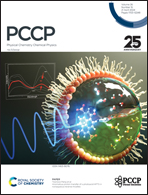The structural, optical and photovoltaic properties of Zn-doped MAPbI2Br perovskite solar cells
Abstract
The spin coating method was used to deposit MAPbI2Br films on FTO-glass substrates. Zn2+ (zinc) doping was used for these films at intensity rates of 2% and 4%, respectively. XRD analysis proved that MAPbI2Br films had a cubic structure and a crystalline character. 2% Zn doping into the MAPbI2Br film had a modest large grain size (38.09 nm), Eg (1.95 eV), high refractive index (2.66), and low extinction coefficient (1.67), according to XRD and UV-vis analyses. To facilitate and enhance carrier transit, at contacts as well as throughout the bulk material, the perovskite's trap-state densities decreased. The predicted MAPbI2Br valence and conduction band edges are −5.44 and −3.52, respectively. The conduction band (CB) edge of the film that was exposed to Zn atoms has been pressed towards the lower value, assembly it a better material for solar cells. EIS is particularly useful for understanding charge carrier transport, recombination mechanisms, and the influence of different interfaces within the device structure. Jsc is 11.09 mA cm−2, Voc is 1.09, PCE is 9.372% and FF is 0.777. The cell made with the 2% Zn doped into the MAPbI2Br film demonstrated a superior device.



 Please wait while we load your content...
Please wait while we load your content...